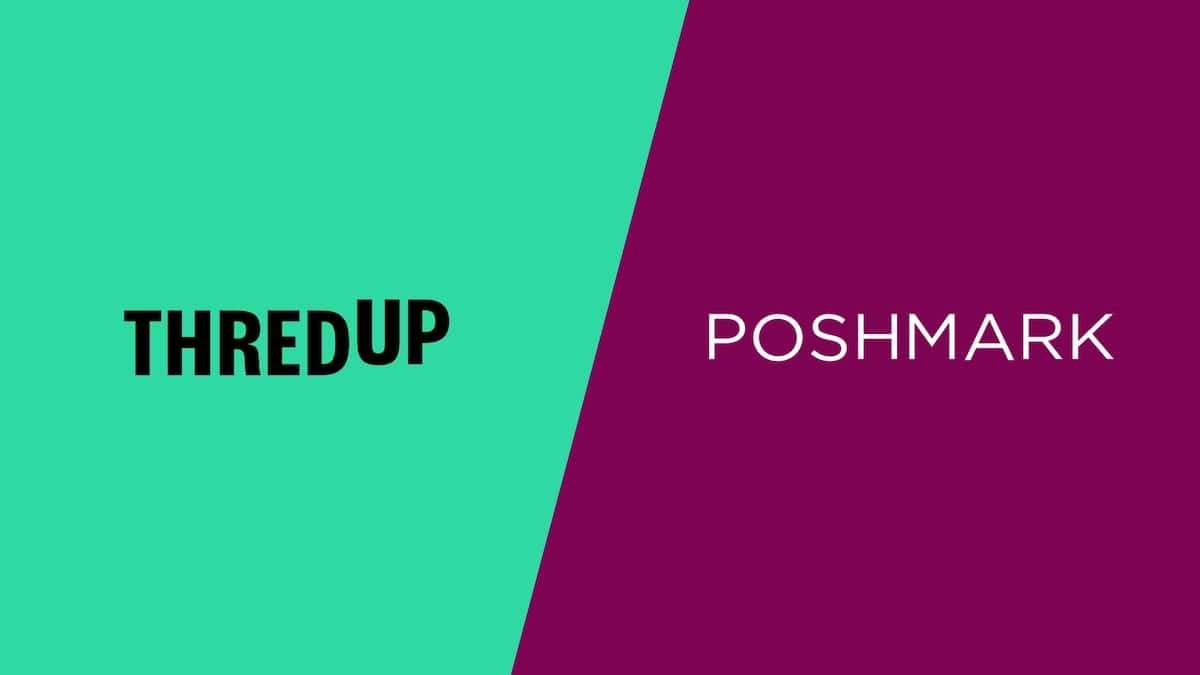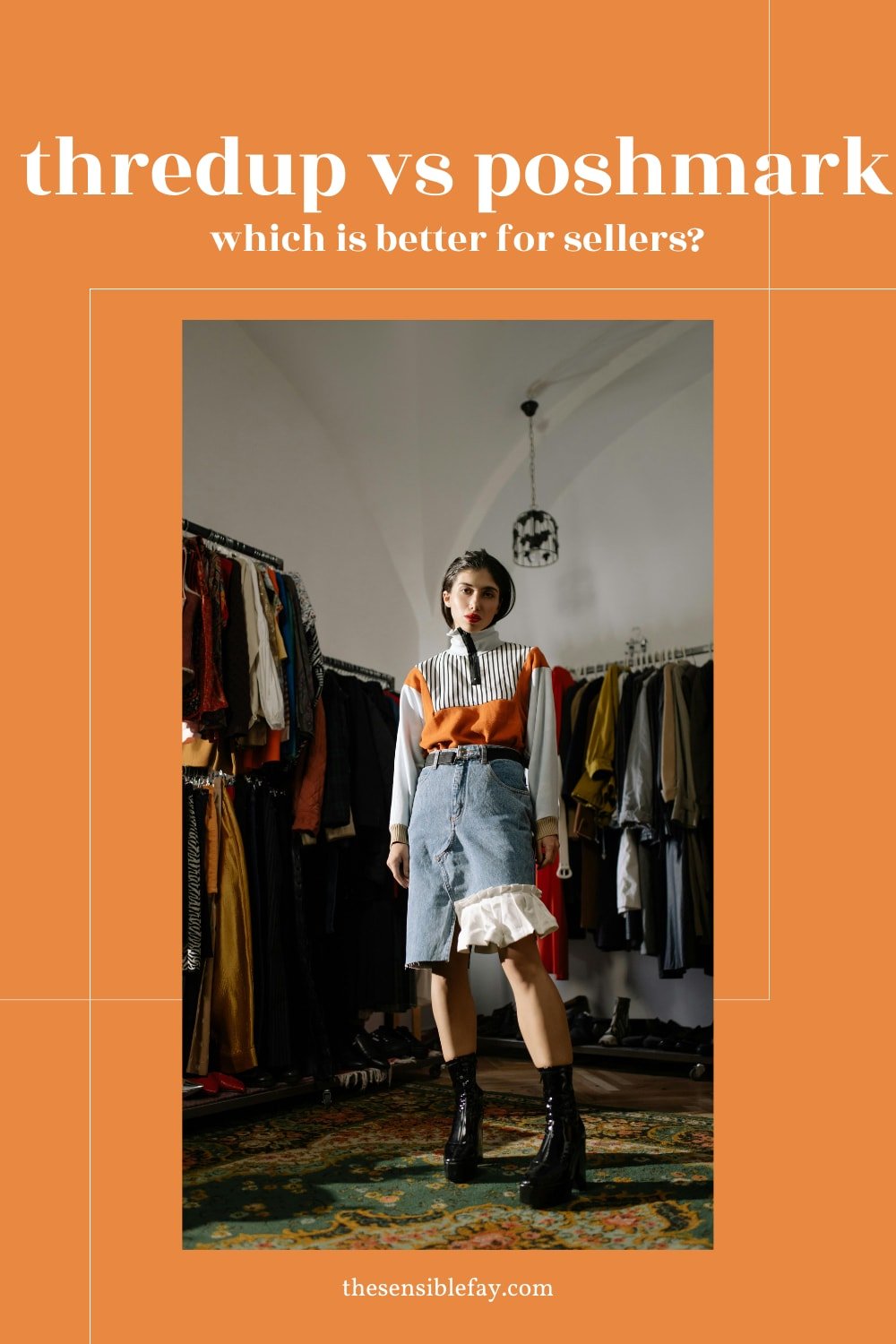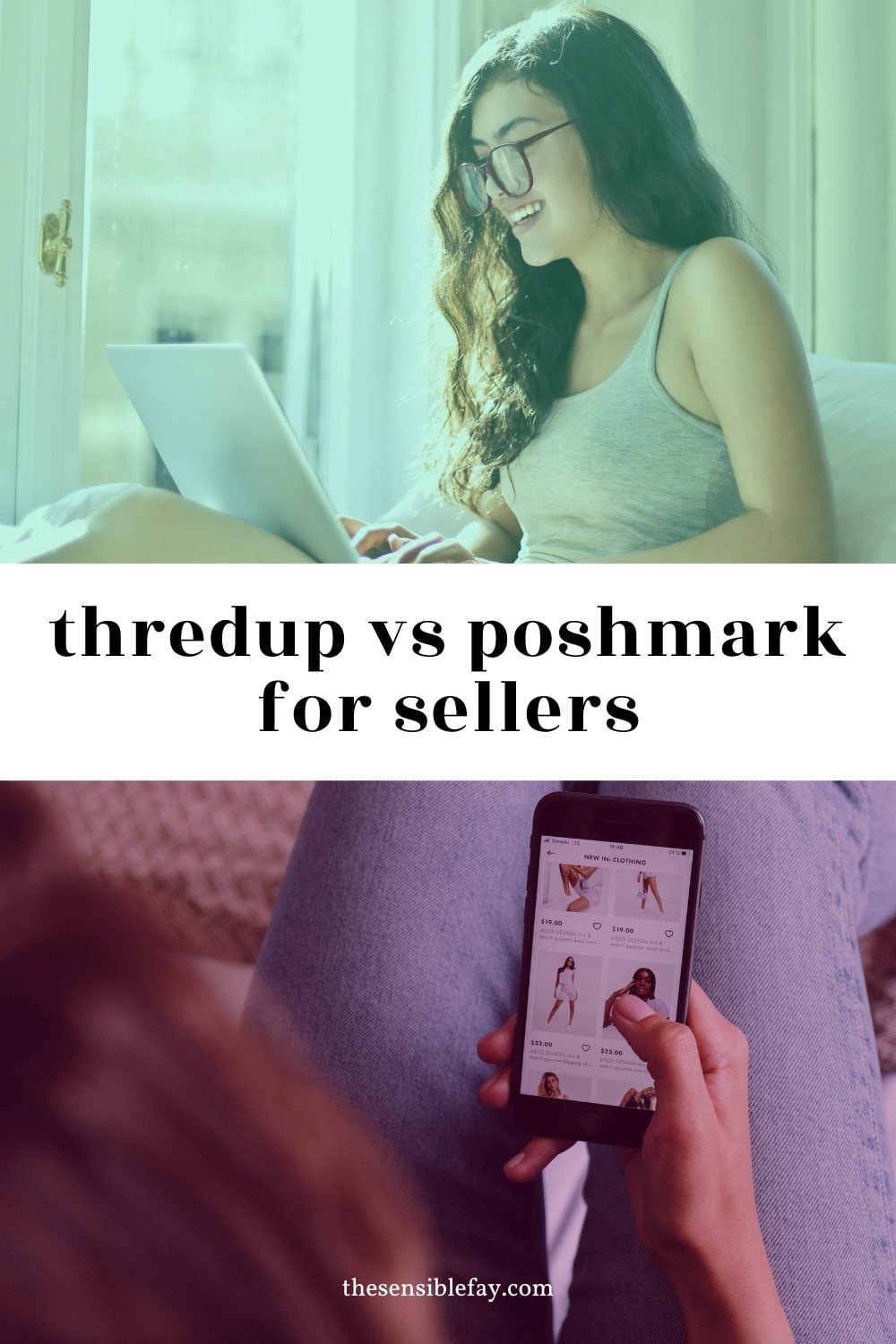Thredup vs Poshmark (For Sellers)
Secondhand shopping is one of the best ways to build a sustainable closet and with climate anxiety on the rise, thrift shopping will only grow in popularity.
With the majority of consumers choosing to shop online nowadays, internet consignment stores have become commonplace. These platforms allow consumers to access styles and brands that previously would've been difficult to find in stores. And with this growing consumer demand, we’ve also seen an increase in secondhand resellers.
ThredUp and Poshmark are two of the biggest online thrift platforms out there. So whether you're looking to make a few extra bucks while cleaning out your closet, or are hoping to become a full-time secondhand reseller, this article tell you everything you need to know about selling on either platform.
Background
Thredup
ThredUp touts itself as the largest online thrift store in the world. The company was founded in 2009 and now hosts over 35,000 unique brands with over 30,000 new listings per day! Most of their clothes fall in the women’s and kid’s clothing category, but you can also find some deals in the shoes, handbags, and men’s clothing categories.
In 2019 ThredUp launched their RaaS (Resale-as-a-Service) initiative. With this new offering, they've been able to expand their reach by working with established brands to create take-back programs and secondhand-selling opportunities.
Poshmark
Poshmark is an online consignment marketplace that was created in 2011. The platform's used by over 100 million users across the U.S. and Canada, and has made sellers over 6 billion dollars. Poshmark stands out because almost functions like a social media platform and incorporates a unique engagement aspect that many other shops are missing.
What Can You Sell
ThredUp
ThredUp has a pretty narrow list of what you can sell. They take women's and children’s apparel, shoes, and handbags but not much else.
Their guidelines forbid offerings with wear and tear, damage, and alterations. They also will not take any items from banned categories like men’s clothing, intimates, formal gowns, and counterfeit items.
Furthermore, ThredUp also has an extensive list of brands that they will not provide payouts for. You can still send them in, but they will not make you any money.
Poshmark
On the other hand, you can sell almost anything on Poshmark. Here's a list of their categories:
Women’s, Children’s, Mens’s Apparel
Electronics
Pets
Shoes & Handbags
Jewelry & Accessories
Makeup
Formal Dresses
Poshmark's list of prohibited items is mostly limited to items that cannot be shipped, fakes, used undergarments, and electronics outside of the electronics market. Here is a full list of restricted goods.
How It Works
ThredUp
To sell on ThredUp, you have to simply order a Clean Out Kit.
The company sends you a durable plastic bag with a prepaid shipping label and you put all your clothes in there. You send your clothes back to them and they sort through your close for qualified listings. They handle all the photography, posting, pricing, storage, marketing, and shipping for you.
You get paid in cash, ThredUp shopping credit, or brand-specific shopping credit.
Poshmark
Poshmark functions similarly to any other online marketplace.
To begin, you create a seller account. From there, you take photos of the items, upload them, price them, and then set the listings live. When an item is uploaded, you can promote it to your followers.
After your item sells, Poshmark provides you with a prepaid label for shipping. You get paid when your delivery is confirmed.
How Much Can You Make?
ThredUp
ThredUp's pricing is entirely dependent on the value of the items that you sell.
Selling Price vs Payout:
• $5.00-$19.99 → 3%-15%
• $20.00-$49.99→15%-30%
• $50.00-$99.99→30%-60%
• $100.00-$199.99→60%-80%
• $200 or more→80%
Lower value items that sell at $5-$20 get a 3%-15% payout. High-value items can range up to 80% payout for items worth $200 or more. There's not a whole bunch of transparency on how they assign payout percentage, but I'm assuming that it's entirely on a sliding scale basis or based on customer demand.
After ThredUp categorizes and lists all your products for you, you can manually adjust the listing price as you see fit. This can obviously increase your earnings but if you inflate prices too much, the item might not sell and you won't get a payout.
Additionally, the amount you can make also depends on whether you choose to get paid out in cash or store credit. If you choose the cash option, you'll have to pay Stripe or Paypal fees. If you to get paid out in store credit, you'll get the exact value in ThredUp credit or maybe even a bonus if you choose brand-specific credit.
ThredUp functions like a consignment store and because they do much of the work for you, they take a huge cut of your earnings. You really can't make too much as a secondhand reseller using ThredUp but it's a pretty good platform if you want to make some side-cash while cleaning your closet.
Poshmark
Poshmark is definitely a more lucrative selling platform. The marketplace takes $2.95 for any item sold under $15 and 20% off items over $15.
Selling Price vs Commission Cost:
• Under $15 → $2.95
• Over $15 →20%
In comparison to ThredUp, Poshmark is better for individual sellers. While the platform does take a huge cut on the cheapest and most expensive items, if you target items in the $11-$15 price range or make enough sales, you can still create a business out of it.
Poshmark also does a better job of with integrated marketing functions. It allows individual sellers to make host Posh Parties, Bundle items, and create unique Deals to better promote their products. The amount that you hustle (strategically) on Poshmark is almost directly reflected in the amount of sales that you make and if you’re listing items in the mid-to-high price range and putting in the work, you can generate some decent side cash.
Pros & Cons Of Each Platform
ThredUp
Pros:
Easy to use process with the Clean Out Kit
All listing, processing, storage, and shipping handled for you
Verification and authentication for luxury goods
All customer service taken care of
Cons:
Limited control over listing pricing, visibility, and marketing
High commission fees
Limited product categories and accepted brands
Poshmark:
Pros:
Built in marketing tools with promos and discounts
No listing fees or returns
Straightforward shipping costs
Verification and authentication for luxury goods
Cons:
High commission fees
Time consuming to maximize potential
Competitive pricing
Shipping costs for items under 1lb
ThredUp vs Poshmark Seller Analysis
ThredUp:
Best for: casual sellers who want want to make a few bucks when cleaning out their closet.
ThredUp take such a huge cut of your profits that it doesn't make sense if you're trying to operate a reselling business. The platform also doesn't offer much control on the listing and marketing side.
However, if you already use the platform as a buyer and were going to donate your used clothes anyway, this completely hands-off approach might be a good choice. ThredUp is also beneficial if you tend to buy clothes from one of their partners. The credits that you generate from clean-out sales can be applied with rewards to shopping from specific brands.
Poshmark:
Best for: secondhand resellers who enjoy a social aspect to their marketing.
As someone trying to make business out of reselling clothes, Poshmark is the better option here. The fee structure is straightforward and the integrated marketing opportunities makes it so that you can sell entirely within the Posh ecosystem without much consideration for outside marketing.
This is both a benefit and a drawback. Using Poshmark to its fullest requires a lot of time as you have to post and engage to ensure exposure and sales. If you’re not looking to invest at least some energy into your postings, it’s probably not the platform for you.
Poshmark does have really high fees though so you might want to compare it to other platforms like Depop, Ebay or Mercari. As a business owner, you're going to need to do the calculations for yourself to see if it's worth it.
So ultimately, choosing between ThredUp and Poshmark depends on your specific needs and preferences as a seller. ThredUp offers a white glove experience, making it an attractive option for those seeking less involvement. On the other hand, Poshmark provides sellers with more control over pricing and the ability to build a personal brand within the platform.
If you’re a conscious consumer, I'd recommend testing each platform as a buyer first. By going through the client experience, you can get a better feel for what customers are looking for and this will help you decide if that's where your ICA can be found. For more on secondhand reselling, consider looking into one of these other online thrifting platforms.
PIN IT FOR LATER:


















